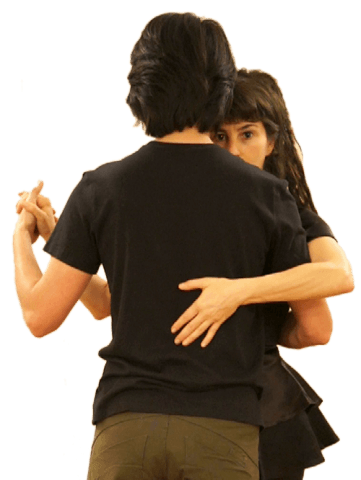Here we go again. My third post on style. The first one is here, it’s meant to calm new people. The second one is here, it’s a bit of a vent.
I’m not being difficult. I really don’t get it.
People in Australia are constantly saying to me “Eventually I want to learn all the styles, but for now I’m just sticking with one.”
I am frustrated by this because I want everyone to dance better. When I see someone who’s not dancing well I want them to be open-minded about learning better technique from more teachers. However, they seem resistant to studying more broadly and they use “style” as the reason.
As a follower I cannot differentiate any tango “styles”.
I can differentiate between leaders who grip me tightly in fear that I might move and those who trust me to stay with them and control my own body. I can differentiate between leaders who have small vocabularies and big ones. I can differentiate between leaders who have rhythmic and melodic relationships to the music. I can differentiate leaders who seem comfortable managing complex traffic from those who are stressed out. I can differentiate (with my eyes closed) leaders who are concerned that someone important is watching them from those who lost in their own pleasure of music, movement, and me. I can differentiate between leaders who are concerned more with how they look than with trying new things.
As a leader… I can differentiate between followers who’ve only done ochos, one of the crosses, voleos with the left leg, counterclockwise giros starting with forward steps from those who are familiar with all the crosses, giros, voleos with both legs, and so forth. I can distinguish followers who know how to hold themselves on top of their base leg from those who are so used to being held up that they have no idea when they’re leaning. I can distinguish followers who have static embraces from those with fluid ones. I can distinguish followers who are hesitant and uncertain and obedient from those who are enjoying themselves.
Is it a style for a follower to do an ocho no matter what I lead, take three unled steps every time I pause, and sometimes go in the opposite direction of the lead because her shoulder joint is fused? Not very stylish in my opinion. These are the girls who start shrieking, while dancing with me, “I don’t dance your style!”
Is it a style to dance with a small vocabulary and a small dynamic range (and therefore a very limited musicality)?
When people say to me “I want to stick with one style first” (especially if it’s a follower who has just been falling on me, or a leader who keeps losing his hip flexion requiring me to compensate for him in every step). I can only smile and blink at them. What are they talking about?
They want to learn sequences before improvisation? That’s not a style of dance, that’s a style of instruction.
They want to learn close embrace before open? It doesn’t really matter because we use exactly the same biomechanical skills, methods of connection, and body control in both. They’ll need to know how to adjust the embrace in order to increase their vocabulary (even to do the same moves with both legs or in both directions!). Pick any video of professional dancers, glue your eyes to the follower’s left shoulder, and watch the embrace flex.
They want to learn to dance to traditional music before new music? That’s cool but to dance interestingly to traditional music we need the body control to dance at different speeds and with different sizes of steps.
I believe that inexperienced dancers have turned the dysfunctions of intermediacy into a divisive language of style.
I have danced with advanced leaders of every proclivity across the US, Europe, and extensively in Buenos Aires. I have danced with most of the advanced leaders in Australia and all of the professionals in New Zealand. Regardless of the appearance of their embrace, advanced leaders all use their bodies in exactly the same way. They have a very strong connection from the floor through to their rib cages. Their chests move because of muscle activation generated in their lower bodies in relation to the floor.
What exactly they are doing with their legs and how their legs are connected to the embrace is very difficult to describe and teach. I know this because I have spent the last four years studying the body in an effort to figure out how to convey the quality of motion that is fundamental to tango pleasure.
I believe that many excellent dancers are not accurately describing what they are doing. When they say things like “lead with your chest”, “walk normally”, “don’t bend your knees”, “lift her up” … they are trying to counteract certain common reactions that arise when people start trying to walk around while gripping another person, but the unfortunate end result is that they are misleading students as to the biomechanics.
What advanced followers do (regardless of the shape and height of their voleos) is control their bodies. They have the ability to hold themselves on their standing leg and project until the leader determines the precise (and sometimes prolonged) moment for transferring her weight into the music.
What you need to dance any style is body control.
Until you have it, everything is difficult. Once you have it, the movements of tango become systematic, and the challenge shifts to improvisation and musicality.
Style is moving with grace, ease, and confidence. Style is moving as if you are a dancer. Style is looking and feeling great on one foot. Style is expressing yourself fabulously in a variety of contexts. Style is having the skills to dance well with anyone.














